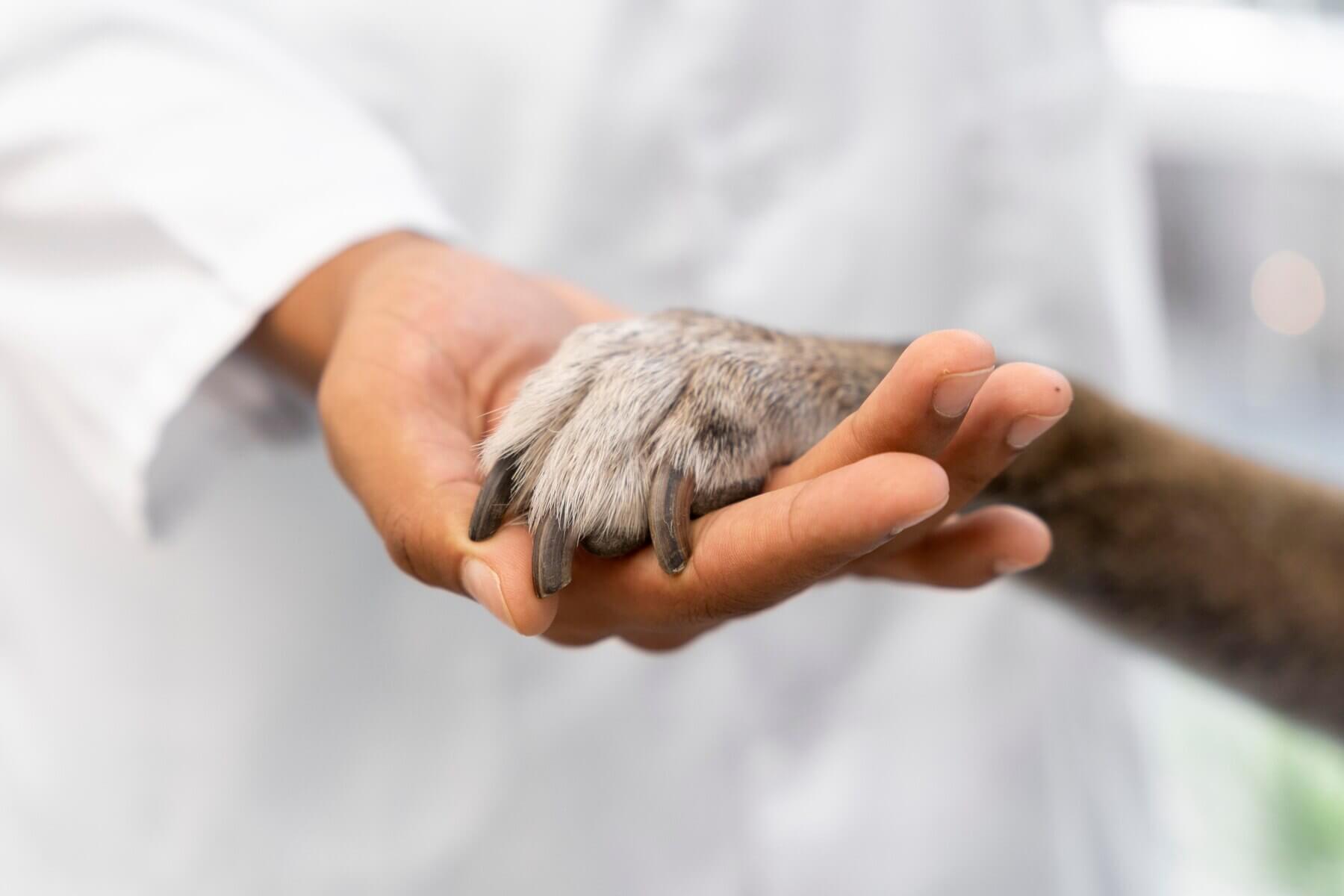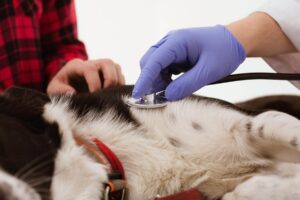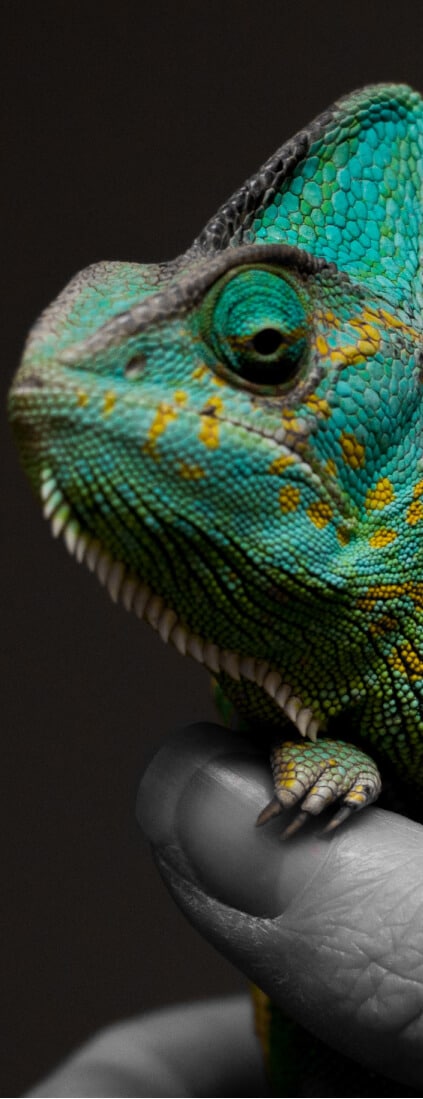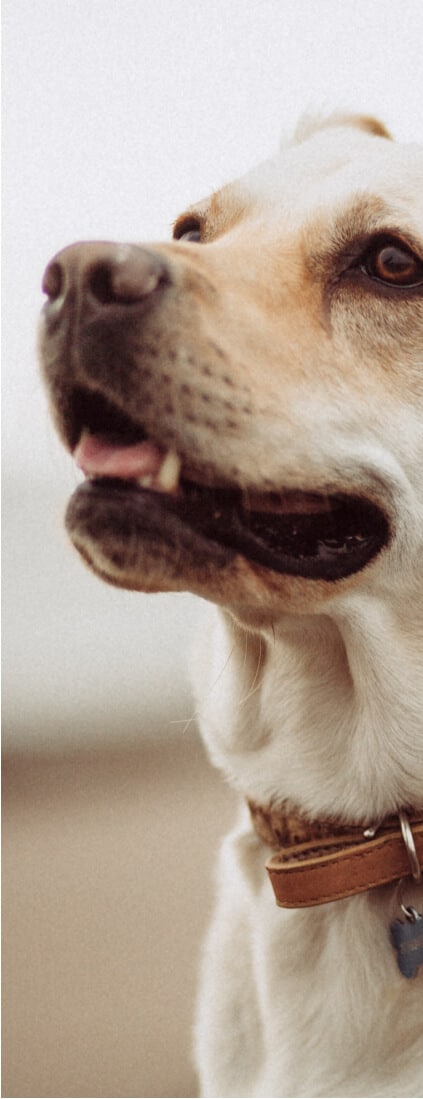If your pet is suffering from old age, illness, or injury, you may be facing one of the toughest and most difficult decisions a pet owner can make. You might be wondering:
- Does euthanasia hurt? (No, it’s completely painless.)
- How long does it take? (Usually 30–60 minutes from the time the doctor enters your home until the time they leave)
- Can I be there with my pet? (Yes, you can stay the whole time.)
Pet euthanasia is designed to provide the most peaceful passing possible, free of pain or distress. Your pet is first given a sedative that will put them into a surgical plane of anesthesia. Once they are fully asleep, they will not feel nor be aware of anything. At that point, a second medication is administered that quietly and painlessly stops their heart.
This guide will walk you through the entire process, so you know exactly what to expect and can help you to make the best decision for your pet.
What Happens During Pet Euthanasia
The euthanasia process uses two different medicines: first, a sedative to help your pet fall into a deep sleep, followed by a final injection of the euthanasia drug that painlessly stops their heart.
Whether your pet is suffering due to old age, illness, or injury, the process is designed to be completely painless. The entire visit typically lasts 30–60 minutes, and you can remain with your pet throughout to provide comfort.
The Sedative Injection
To begin, your pet will receive a sedative (anesthetic) injection to induce a state of deep relaxation, leading to a gradual loss of consciousness (a surgical plane of anesthesia) before the final injection is administered. Most pets do not react to the first injection, and within 2–10 minutes, they become drowsy and enter a deep sleep. Some pets take a little longer to get sleepy, which is completely normal.
As the sedative takes effect, your pet may be wobbly. Some will walk around before lying down. Their breathing may slow, and any pain or discomfort they may have experiencing as a part of their decline, illness, or injury will be completely alleviated as they fall asleep.
Unlike human sleep, their eyes may remain partially or fully open, even when they are fully asleep. Once they are asleep, they will not feel or be aware of anything.
Preparing for the Final Injection: A Time to Say Goodbye
Once your pet is fully unconscious and deeply asleep, the veterinarian will begin preparing for the final injection.
This is a quiet moment, and it’s also an opportunity to say goodbye while your pet is still living but deeply asleep. Speak softly, hold them if you’d like, and tell them how much you love them. Your presence and voice can be comforting, even as they sleep.
The veterinarian will gently locate a vein, usually in your pet’s leg, and may shave a small patch of fur for better visibility. A tourniquet will be placed to allow for the best visualization of the vessel. This preparation is done with care and respect, ensuring everything is as gentle as possible.
The Final Injection – Euthanasia Medication
When you and your family are ready, the vet will administer the final injection. This medication will allow your pet to pass painlessly within a minute or two or less.
During these final moments, their breathing slows and stops peacefully within a minute or two. The vet will check their heart with a stethoscope to make sure your pet has passed.
Your pet’s body will go through some natural changes after they pass away. In some cases, a few last breaths or muscle movements may be seen. Their body may also release bodily fluids as muscles relax—these are normal to see.
Body Care After Euthanasia
After your pet passes, you will need to decide on their final resting arrangements.
If you’ve already made plans with a company specializing in end-of-life care near you, like Compassionate Care in Portland, OR, this will be taken care of for you, including transportation to our local crematory. We will gently remove your pet from your home and arrange for cremation, ensuring they are cared for with the respect and dignity they deserve.
If this was an unplanned passing, such as in an emergency vet clinic, you may need assistance arranging cremation, burial, or another aftercare option. Compassionate Care can also pick up your deceased pet at your home for an additional fee if needed.
Many families choose cremation, which lets you have your pet’s cremains returned to you. This also allows the option to purchase and place the cremains in a customized urn or memorial keepsake if desired.
There are two main types of cremation services:
- Aquamation (Water Cremation): A gentle, eco-friendly alternative that uses water instead of fire. This process uses substantially less energy and does not create greenhouse gases.
- Flame Cremation: A traditionally understood method that reduces your pet’s remains to ash.
Within these, you can choose:
- Private Cremation: Your pet is cremated individually, and their pet’s ashes are returned to you.
- Communal Cremation: Your pet is cremated with others, and the cremains are respectfully scattered.
If you’re considering a home burial (where legally permitted) or a pet cemetery, check local regulations first, as requirements vary. Your veterinarian or a local provider may be able to offer guidance on available options in your area.
If you would like a paw print or fur clipping keepsake, be sure to request it before cremation begins, as paw prints must be taken first.
For families in Portland, Oregon, and the surrounding areas: Take your time. When you feel ready, give us a call 24/7 at 503.880.1172.
Euthanasia: At the Vet’s Office or at Home?
Deciding where to say goodbye to your pet is a deeply personal choice. Whether you choose a vet’s office or home euthanasia, the procedure remains the same—peaceful, painless, and handled with care. However, the experience can feel different depending on the setting.
At the Vet’s Office
Some veterinary clinics have a quiet, private room for the process of euthanasia. Vets and staff understand the emotional weight of this moment and will provide privacy and support throughout the process. Many clinics also offer a discreet exit, so you don’t have to walk through a busy waiting room afterward.
Choosing this option means:
- A full vet team is available
- Your pet’s regular veterinarian may be able to assist with the procedure
- The veterinary clinic will be able to assist with aftercare arrangements using the crematory that they partner with
- If you are planning to bury your pet, you will need to remove and transport your pet back to your home
Keep in mind that while clinics make this as comfortable as possible, the car ride and
For many families, in-home euthanasia (IHE) offers a more peaceful and intimate farewell. Your pet can remain in their favorite spot—whether it’s their bed, the couch, or outside in the garden—surrounded by loved ones. With in-home euthanasia, there’s no need for a stressful car ride, and other pets and family members can also be present for comfort.
At-home euthanasia means:
- Your pet stays in a familiar, comfortable space.
- No stressful transport or clinic environment.
- Other pets and family members can be present.
- More flexibility with timing and scheduling, including after work or other evening hours
Transportation and aftercare is often handled by the IHE provider. An unfamiliar setting can be stressful for some pets. Some pets may feel anxious traveling to the vet, and you’ll want to factor in what will be most comfortable for them.
At Home
For families in Portland and surrounding areas, Compassionate Care is here to make this experience as gentle and peaceful as possible.
FAQs About Pet Euthanasia
How do I know it’s time to consider euthanasia?
Deciding to say goodbye is never easy and often comes with feelings of guilt and uncertainty. You may wonder, Am I making the right decision?—and that’s completely normal.
Your veterinarian can help by assessing your pet’s medical history, physical condition, and your pet’s quality of life, but as a pet owner, you often intuitively know when the time is right.
A key consideration is whether your pet is having more bad days than good ones—struggling with pain, mobility, or a loss of interest in daily activities.
If you’re unsure, this guide on when to consider euthanasia may help.
Do pets feel pain during the euthanasia procedure?
No. In some rare cases, a pet may feel a slight sting upon the first sedative, which is quickly alleviated as the anesthetic infiltrates the injection site. The first shot will put them into a surgical plane of anesthesia such that they won’t feel nor be aware of anything. This deep plane of anesthesia means that for the final injection it’s completely painless.
Are there any side effects of the euthanasia medication?
No. The medications used for euthanasia are designed to work gently and painlessly. After your pet passes, in some rare instances you may notice some natural physical reactions, including:
✔ Muscle twitches or slight movement even once they have passed– These are involuntary movements.
✔ A few final breaths or gasps – This is a reflex and may occur after passing in some rare cases.
✔ Bladder or bowel release – As the muscles relax, fluids and excretions may exit the body.
Can a pet wake up after euthanasia?
No. The euthanasia medication is carefully dosed to ensure pets will pass away, and the veterinarian will ensure this has happened.
Is there support available after pet loss?
Yes, pet loss support is available through many local support groups. The loss of a pet is difficult, and it’s normal to need help processing your grief. Please feel free to contact us for references.
















